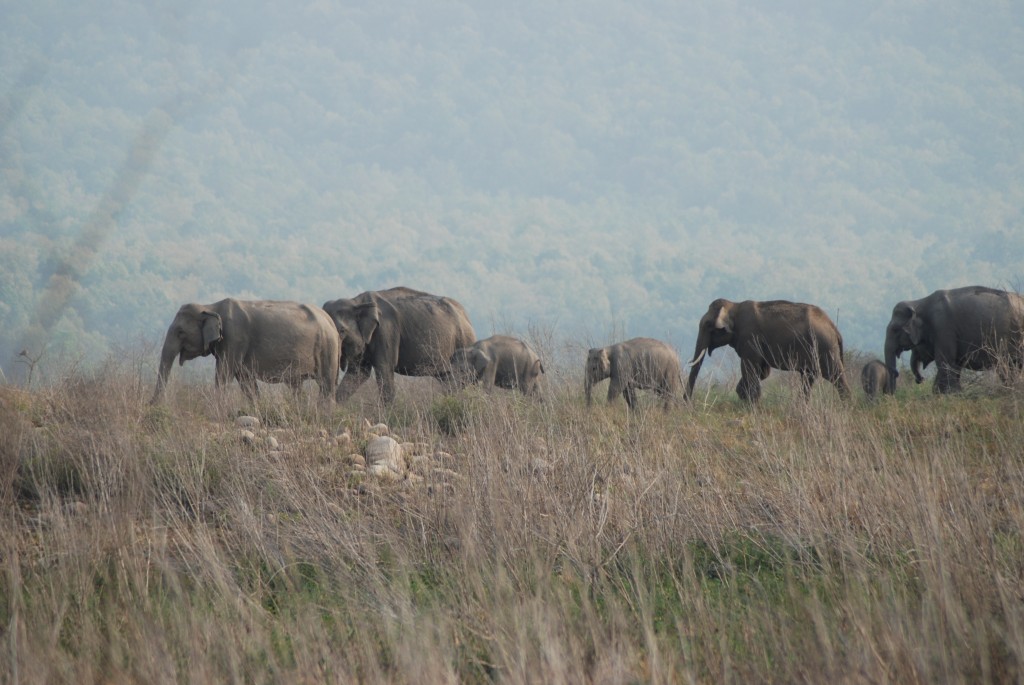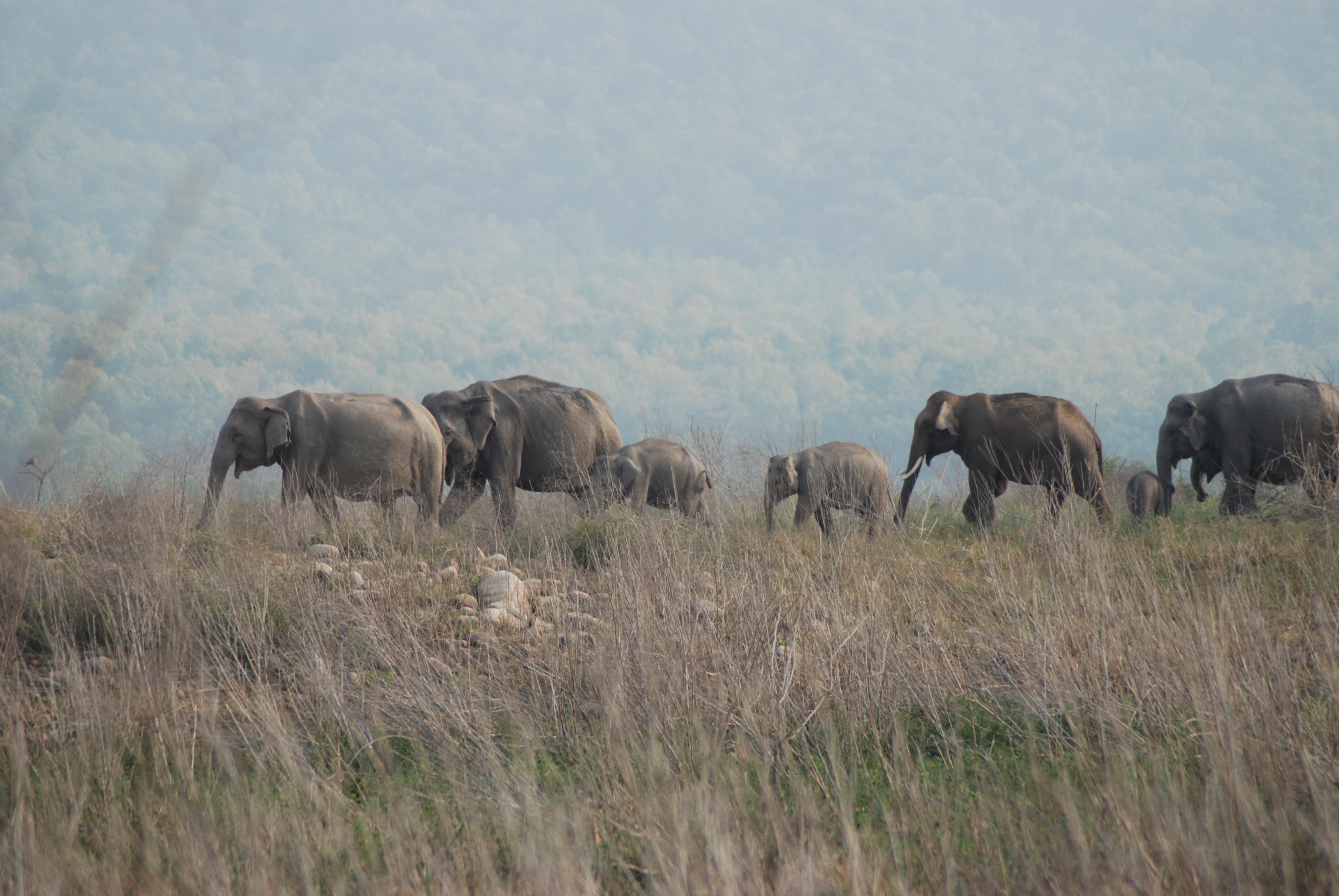
Published on 05/06/2011
First Update 17/03/2017
The Elephant is an integral part of India’s culture. Mythology and history are replete with instances of the pristine glory of the Elephants. Associated with rain and thunder, the elephant was mount of ‘ Indra’ the Hindu God of war. Legend also has it that the elephant took birth from the celestial waters and this associated it with “Sri” the goddess of the earth and abundance. Spouse to Vishnu “Sri” is said to have arisen from the lotus and delights in the sound of elephants. From the birth of Airawata, the first elephant, elephants have evolved into symbols of majesty, power, dignity and compassion. In 305 B.C. Chandra Gupta Maurya defeated Seleucus Nicator. Seleucus gave his daughter in marriage to Chandra Gupta who gifted 500 elephants to Seleucus. Chandra Gupta Mauryas army had 700,000 men, 9000 elephants and 10,000 chariots.
The intelligence and humanness of elephant behavior has been aptly demonstrated. Some elephants are known to have taken up their riders when slain in the battle and carried them for burial, others have covered them when lying on the ground with a shield, and still others have borne the brunt of the battle in their defense when fallen. There was one that even died of remorse and despair because it had killed its rider in a fit of rage. The instinct of protection in elephants is almost identical to that as in man. Victorian authors tell us that grand old male elephants are almost always surrounded by a ring of cows who would not let any hunter have a close mortal shot. This was chiefly responsible for its survival and if by chance the animal was wounded, the shield of defense was so strong that the cows were immediately known to lift up the huge animal on a stretcher made collectively of their trunks and then supported by their fellow members they were known to carry him deep into the Jungle far from the reach of the hunter. The cows while moving are in a constant habit of ceaselessly caressing the young with their trunks. This precaution exercised by mothers does not permit the naughty youngsters to stray out of their sight and inadvertently separate from the herd. There are stories of elephants using leaves and grass to bury elephant and human remains and shattering the tusks of dead animals against trees or rocks. Chandra shekharan, a trained Asian elephant, once refused to lower a pillar wood in a hole. When his Mahout approached the hole he found a dog sleeping at the bottom of the pit. Only after the dog was chased away would the elephant complete his task.
The Fayum basin of Egypt some 50 or 60 million years ago supported the pig sized mammals from which evolved elephant like creatures the proboscideans –named for their proboscis or trunk. The two living species of elephants – the African elephant (Loxodanta africana) and the Asian Elephant (Elephas maximus) – are the end points of over fifty million years of evolutionary history. Prehistoric elephants and their kin the mastodons, deinotheres and others, occupied environments ranging from deserts, to tropical rainforest and from sea level to high altitudes. With the exception of Antarctica, Australia, and some oceanic islands, the members of the order Proboscidea have at sometime inhabited every continent on this planet. The mammoths were most closely related to the living asian elephants. It was believed that at one time there may have been as many as 162 proboscidean species, of these, 160 have become extinct. There are two sub species of the african elephant, the bush elephant ( Loxodonta africana sub. sp. cyclotis) and the forest elephant (Loxodonta africana sub. sp. africana) which differ from the asian elephants in having larger ears and backs swayed.
The Elephantine form is remarkable and has been the subject of many anecdotes including five blind men defining an elephant. The ‘ Gajagamini’ is one of the forms in which ladyhood has been defined in Indian culture and mythology.
Organ wise, the elephant makes a remarkable study, the trunk which is the union of the nose and the upper lip is highly sensitive and complex organ manipulated by more than 100,000 muscle units. An elephant uses its trunk for feeding, watering, dusting, smelling, touching, sound production, lifting and as a weapon for defense and attack. The summer season is unbearable for elephants because due to their massive bodies, the dissipation of heat becomes a major problem. The natural process of sweating is not enough to normalise their normal temperatures. In order to cool themselves they are always ready for a dip. In case water is not available in the vicinity and they are maddened by thirst they have an inbuilt mechanism where they insert their trunk deep into the mouth and suck out water from their reserve pouch which holds 5 to 10 litres of a liquid which feels like saliva and in emergency situations elephants also sprinkle themselves with this metabolic fluid to cool down their bodies.
Herbivorous animals in the rainforest frequently visit salt licks to satisfy their salt requirements. Although an elephant cannot lick salt because its tongue cannot move round the tusk or trunks but it would dig at the earth of a salt lick using his tusks to dig clods of earth which he would then put into its mouth with its trunks. An African elephant was observed to have eaten as much as 17 kg. of earth ( which is briefly chewed and then swallowed) in 45 minutes.
The elephant tusks are also remarkable, they are its second incisors, growing continuously at the rate of about 7 inches per year. Elephants may use their tusks to dig for water, salt and roots to debark trees as levers for maneuvering felled trees and branches for display, for marking trees as weapons as trunk rests or as protection for the trunks. Interestingly, like humans who are left or right handed, elephants are also left or right tusked. The tusk that is used most is the master tusk and is shorter and more rounded at the lip because of wear. Ivory has had some unexpected uses for human beings too. It is known to have water absorbing properties and craftsmen and weathermen in Africa use ivory as a rain predictor by planting it in the ground in selected locations. Long Ivory tusks are very rare among Indian elephants mainly because the Indian Forest vegetation is low in calcium content whereas the ingredient is abundant in African fodder. Asian female elephants are often tuskless and Asian elephants are rare and fully protected from international trade for years.
Cheek teeth of animals are also typically strange. They slide forward like on a conveyor belt in the mouth as new teeth develop from behind. The cheek teeth are adapted to a highly abrasive diet of trees and plants-more than eighty different species. A two to seven tons animal requires 75 to 150 kg food per day and about 20 to 45 gallons of water (80 to 160 L) An extremely thirsty Bull Asian elephant once drank 254 litres of water in less than 5 minutes.
Elephants are shortsighted beasts with a superbly developed olfactory sense.
Home ranges of elephants or the areas they wander in search of food vary in size from 15-50 km. for cows and their off springs and from 500 to 1500 sq. km. for bulls. They spend about 18 to 20 hour per day in search of food which also sends elephants on long migrations and herds are known to travel 5000 to 10000 km. in a year to complete one cycle of seasonal migration. The migratory routes are well-established paths that often follow a river basin, a valley or a watershed.

Corridor destruction is one major problem facing elephant migration. With in Uttar Pradesh, having the smallest number of elephant population in the country, most of the elephants are distributed within the Corbett and Rajaji national parks divided by a small strip of unprotected land. In the past half century the migration path used by elephants in Uttar Pradesh have been reduced or connections completely blocked. Within Rajaji Park links between the smaller eastern wing having about 200 elephants and the bigger western wing having about 100 elephants have been severed putting great pressure on the forest land as also subjecting the animals to inherent defects of inbreeding.
Elephants like man are highly social animals living in matriarchal families, forming the basic building block of a clan or herd. The Matriarch is usually the oldest of the herd giving stout leadership to the herd in the event of water and food crisis. Male elephants are usually driven from the herds by older females when they reach puberty at about 13 years of age. They usually join bachelor herds or may forage alone. The key to elephant society is communication. Elephants are known to produce low frequency sounds not audible to the human ear but which can travel for long distances and can be heard by other elephants as far as 2.4 kms away. Elephant copulation, although associated with many myths is in the normal quadrupled way. Female elephants become sexually receptive for just a few days in four years while males become active for about three months in every year. Sexually active males are characterised by secretions arising out of the genitalia and the temporal glands. This condition is the ‘musth’ condition. The pregnancy period in elephants ranges from 18 to 22 months. New born calves are tended by mothers and other adult females. The elephant man relationship is very good in most part of country due to enormous human compassion and tolerance.
